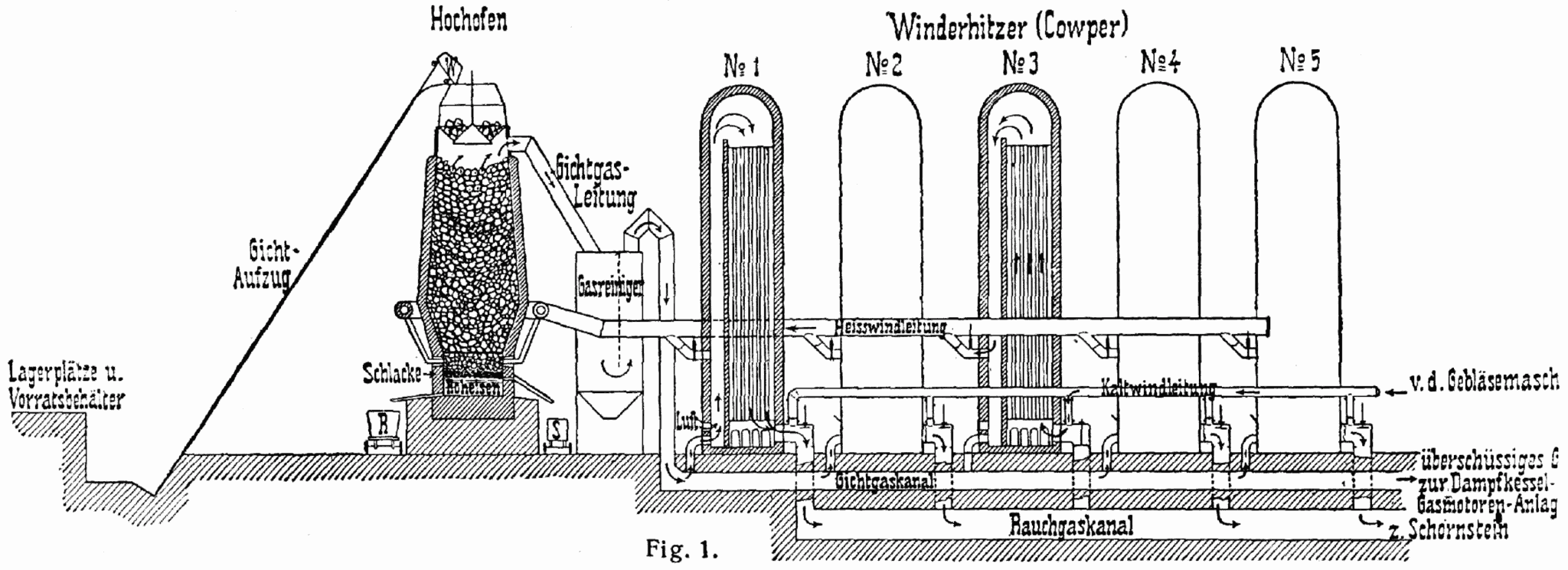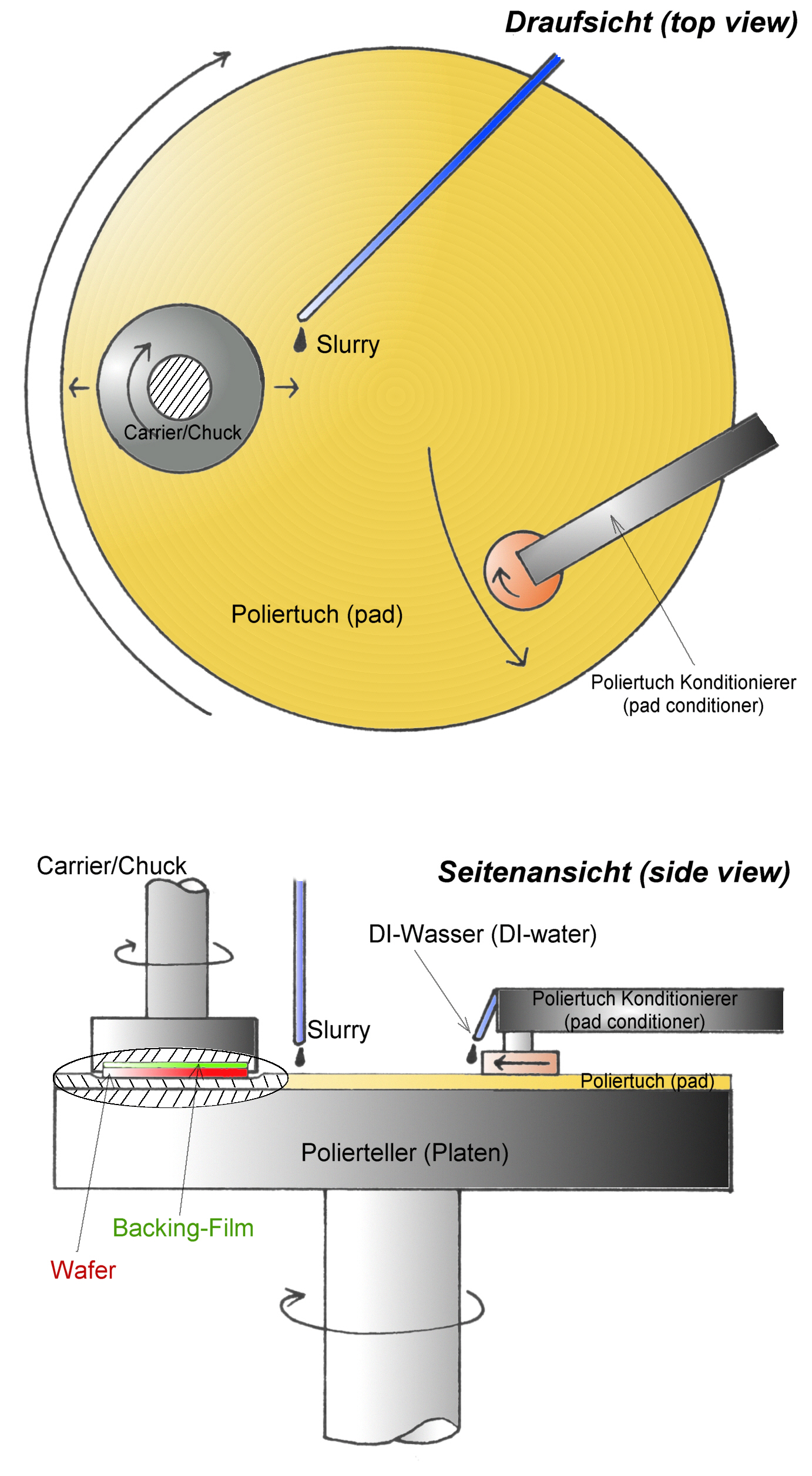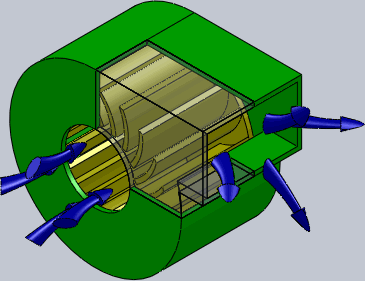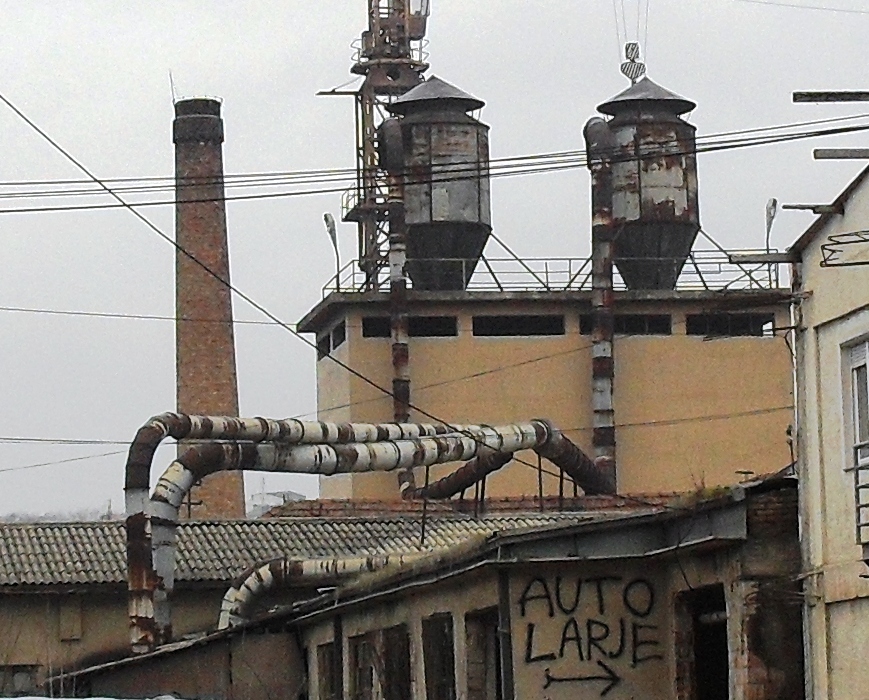|
Air Preheater
An air preheater is any device designed to heat air before another process (for example, combustion in a boiler), with the primary objective of increasing the thermal efficiency of the process. They may be used alone or to replace a recuperative heat system or to replace a steam coil. In particular, this article describes the combustion air preheaters used in large boilers found in thermal power stations producing electric power from e.g. fossil fuels, biomass or waste. (See Chapter 8 by Z.H. Lin) For instance, as the Ljungström air preheater has been attributed worldwide fuel savings estimated to 4,960,000,000 tons of oil, "few inventions have been as successful in saving fuel as the Ljungström Air Preheater", marked as the 44th International Historic Mechanical Engineering Landmark by the American Society of Mechanical Engineers. The purpose of the air preheater is to recover the heat from the boiler flue gas which increases the thermal efficiency of the boiler by ... [...More Info...] [...Related Items...] OR: [Wikipedia] [Google] [Baidu] |
Steam Generator
Steam is water vapor, often mixed with air or an aerosol of liquid water droplets. This may occur due to evaporation or due to boiling, where heat is applied until water reaches the enthalpy of vaporization. Saturated or superheated steam is invisible; however, wet steam, a visible mist or aerosol of water droplets, is often referred to as "steam". When liquid water becomes steam, it increases in volume by 1,700 times at standard temperature and pressure; this change in volume can be converted into mechanical work by steam engines such as reciprocating piston type engines and steam turbines, which are a sub-group of steam engines. Piston type steam engines played a central role in the Industrial Revolution and modern steam turbines are used to generate more than 80% of the world's electricity. If liquid water comes in contact with a very hot surface or depressurizes quickly below its vapour pressure, it can create a steam explosion. Types of steam and conversions Steam is trad ... [...More Info...] [...Related Items...] OR: [Wikipedia] [Google] [Baidu] |
Regenerative Heat Exchanger
A regenerative heat exchanger, or more commonly a regenerator, is a type of heat exchanger where heat from the hot fluid is intermittently stored in a thermal storage medium before it is transferred to the cold fluid. To accomplish this the hot fluid is brought into contact with the heat storage medium, then the fluid is displaced with the cold fluid, which absorbs the heat. In regenerative heat exchangers, the fluid on either side of the heat exchanger can be the same fluid. The fluid may go through an external processing step, and then it is flowed back through the heat exchanger in the opposite direction for further processing. Usually the application will use this process cyclically or repetitively. Regenerative heating was one of the most important technologies developed during the Industrial Revolution when it was used in the hot blast process on blast furnaces. It was later used in glass melting furnaces and steel making, to increase the efficiency of open hearth furnaces, ... [...More Info...] [...Related Items...] OR: [Wikipedia] [Google] [Baidu] |
Expansion Joint
A expansion joint, or movement joint, is an assembly designed to hold parts together while safely absorbing temperature-induced expansion and contraction of building materials. They are commonly found between sections of buildings, bridges, sidewalks, railway tracks, piping systems, ships, and other structures. Building faces, concrete slabs, and pipelines expand and contract due to warming and cooling from seasonal variation, or due to other heat sources. Before expansion joint gaps were built into these structures, they would crack under the stress induced. Bridge expansion joints Bridge expansion joints are designed to allow for continuous traffic between structures while accommodating movement, shrinkage, and temperature variations on reinforced and prestressed concrete, composite, and steel structures. They stop the bridge from bending out of place in extreme conditions, and also allow enough vertical movement to permit bearing replacement without the need to dismant ... [...More Info...] [...Related Items...] OR: [Wikipedia] [Google] [Baidu] |
Revolutions Per Minute
Revolutions per minute (abbreviated rpm, RPM, rev/min, r/min, or r⋅min−1) is a unit of rotational speed (or rotational frequency) for rotating machines. One revolution per minute is equivalent to hertz. Standards ISO 80000-3:2019 defines a physical quantity called ''rotation'' (or ''number of revolutions''), dimensionless, whose instantaneous rate of change is called ''rotational frequency'' (or ''rate of rotation''), with units of reciprocal seconds (s−1). A related but distinct quantity for describing rotation is ''angular frequency'' (or ''angular speed'', the magnitude of angular velocity), for which the SI unit is the radian per second (rad/s). Although they have the same dimensions (reciprocal time) and base unit (s−1), the hertz (Hz) and radians per second (rad/s) are special names used to express two different but proportional ISQ quantities: frequency and angular frequency, respectively. The conversions between a frequency and an angular frequency ... [...More Info...] [...Related Items...] OR: [Wikipedia] [Google] [Baidu] |
Ceramic
A ceramic is any of the various hard, brittle, heat-resistant, and corrosion-resistant materials made by shaping and then firing an inorganic, nonmetallic material, such as clay, at a high temperature. Common examples are earthenware, porcelain, and brick. The earliest ceramics made by humans were fired clay bricks used for building house walls and other structures. Other pottery objects such as pots, vessels, vases and figurines were made from clay, either by itself or mixed with other materials like silica, hardened by sintering in fire. Later, ceramics were glazed and fired to create smooth, colored surfaces, decreasing porosity through the use of glassy, amorphous ceramic coatings on top of the crystalline ceramic substrates. Ceramics now include domestic, industrial, and building products, as well as a wide range of materials developed for use in advanced ceramic engineering, such as semiconductors. The word '' ceramic'' comes from the Ancient Greek word (), meaning ... [...More Info...] [...Related Items...] OR: [Wikipedia] [Google] [Baidu] |
Heat Transfer
Heat transfer is a discipline of thermal engineering that concerns the generation, use, conversion, and exchange of thermal energy (heat) between physical systems. Heat transfer is classified into various mechanisms, such as thermal conduction, Convection (heat transfer), thermal convection, thermal radiation, and transfer of energy by phase changes. Engineers also consider the transfer of mass of differing chemical species (mass transfer in the form of advection), either cold or hot, to achieve heat transfer. While these mechanisms have distinct characteristics, they often occur simultaneously in the same system. Heat conduction, also called diffusion, is the direct microscopic exchanges of kinetic energy of particles (such as molecules) or quasiparticles (such as lattice waves) through the boundary between two systems. When an object is at a different temperature from another body or its surroundings, heat flows so that the body and the surroundings reach the same temperature, ... [...More Info...] [...Related Items...] OR: [Wikipedia] [Google] [Baidu] |
Rotor (turbine)
A turbine ( or ) (from the Greek , ''tyrbē'', or Latin ''turbo'', meaning vortex) is a rotary mechanical device that extracts energy from a fluid flow and converts it into useful work. The work produced can be used for generating electrical power when combined with a generator.Munson, Bruce Roy, T. H. Okiishi, and Wade W. Huebsch. "Turbomachines." Fundamentals of Fluid Mechanics. 6th ed. Hoboken, NJ: J. Wiley & Sons, 2009. Print. A turbine is a turbomachine with at least one moving part called a rotor assembly, which is a shaft or drum with blades attached. Moving fluid acts on the blades so that they move and impart rotational energy to the rotor. Gas, steam, and water turbines have a casing around the blades that contains and controls the working fluid. Modern steam turbines frequently employ both reaction and impulse in the same unit, typically varying the degree of reaction and impulse from the blade root to its periphery. History Hero of Alexandria demonstrate ... [...More Info...] [...Related Items...] OR: [Wikipedia] [Google] [Baidu] |
Pulverizer
Comminution is the reduction of solid material A material is a matter, substance or mixture of substances that constitutes an Physical object, object. Materials can be pure or impure, living or non-living matter. Materials can be classified on the basis of their physical property, physical ...s from one average particle size to a smaller average particle size, by Crusher, crushing, Mill (grinding), grinding, cutting, Vibrator (mechanical), vibrating, or other processes. Comminution is related to pulverization and grinding. All use mechanical devices, and many types of mill (grinding), mills have been invented. Concomitant with size reduction, comminution increases the surface area of the solid. For example, a pulverizer mill is used to Pulverized coal-fired boiler, pulverize coal for combustion in the steam-generating furnaces of Coal-fired power station, coal power plants. A cement mill produces finely ground ingredients for portland cement. A hammer mill is used on farm ... [...More Info...] [...Related Items...] OR: [Wikipedia] [Google] [Baidu] |
Centrifugal Fan
A centrifugal fan is a mechanical device for moving air or other gases in a direction perpendicular to the axis of rotation of the fan. Centrifugal fans often contain a ducted fan, ducted housing to direct outgoing air in a specific direction or across a heat sink; such a fan is also called a blower, blower fan, or squirrel-cage fan (because it looks like a hamster wheel). Tiny ones used in computers are sometimes called biscuit blowers. These fans move air from the rotating inlet of the fan to an outlet. They are typically used in ducted applications to either draw air through ductwork/heat exchanger, or push air through similar impellers. Compared to standard axial fans, they can provide similar air movement from a smaller fan package, and overcome higher Fluid dynamics, resistance in air streams. Centrifugal fans use the kinetic energy of the impellers to move the air stream, which in turn moves against the resistance caused by ducts, dampers and other components. Centrifu ... [...More Info...] [...Related Items...] OR: [Wikipedia] [Google] [Baidu] |
Dust Collector
A dust collector is a system used to enhance the quality of air released from industrial and commercial processes by collecting dust particle and other impurities from air or gas. Designed to handle high-volume dust loads, a dust collector system consists of a blower, dust filter, a filter-cleaning system, and a dust receptacle or dust removal system. It is distinguished from air purifiers, which use disposable filters to remove dust. History The father of the dust collector was from Lübeck. In 1921, he patented three filter designs that he had pioneered to remove dust from air. Uses Dust collectors are used in many processes to either recover valuable granular solid or powder from process streams, or to remove granular solid pollutants from exhaust gases prior to venting to the atmosphere. Dust collection is an online process for collecting any process-generated dust from the source point on a continuous basis. Dust collectors may be of single unit construction, or a colle ... [...More Info...] [...Related Items...] OR: [Wikipedia] [Google] [Baidu] |
Ljungström Regenerative Heat Exchanger
Ljungström is a Swedish family originating from Jönköping County, Småland, through the bailiff Johan ''Liungström'' (''floruit'' 1716, died circa 1730). Members in selection * Johan Patrik Ljungström (1784–1859), jeweler * Jonas Patrik Ljungström (1827–1898), cartographer * Georg Ljungström (1861–1930), poet * Oscar Ljungström (1868–1943), engineer, armed forces officer * Birger Ljungström (1872–1948), industrialist * Fredrik Ljungström (1875–1964), industrialist * Gunnar Ljungström (1905–1999), technical designer * Astrid Ljungström (1905–1986), journalist * Olof Ljungström (1918–2013), engineer See also * Axel Ljungströms Fabriks AB * Ljungström air preheater Ljungström air preheater is an air preheater invented by the Swedish engineer Fredrik Ljungström (1875–1964). The patent was achieved in 1930. The factory and workshop were in Lidingö throughout the 1920s, with about 70 employees. In the 19 ... * Ljungström locomotive ... [...More Info...] [...Related Items...] OR: [Wikipedia] [Google] [Baidu] |
Rotating Air Preheater
Rotation or rotational/rotary motion is the circular movement of an object around a central line, known as an ''axis of rotation''. A plane figure can rotate in either a clockwise or counterclockwise sense around a perpendicular axis intersecting anywhere inside or outside the figure at a ''center of rotation''. A solid figure has an infinite number of possible axes and angles of rotation, including chaotic rotation (between arbitrary orientations), in contrast to rotation around a axis. The special case of a rotation with an internal axis passing through the body's own center of mass is known as a spin (or ''autorotation''). In that case, the surface intersection of the internal ''spin axis'' can be called a ''pole''; for example, Earth's rotation defines the geographical poles. A rotation around an axis completely external to the moving body is called a revolution (or ''orbit''), e.g. Earth's orbit around the Sun. The ends of the external ''axis of revolution'' can be cal ... [...More Info...] [...Related Items...] OR: [Wikipedia] [Google] [Baidu] |









